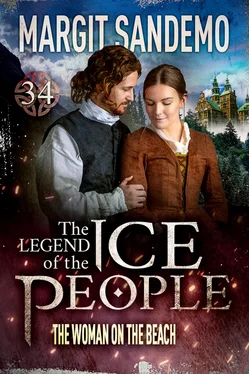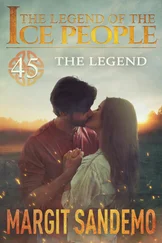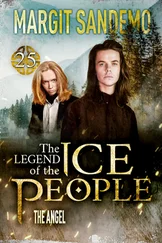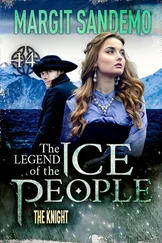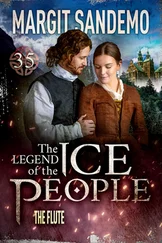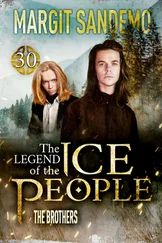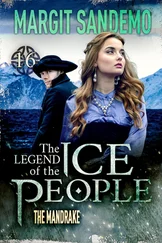I prefer to write to you rather than visit you at home or in your office. Discretion is a matter of honour.
I look forward to hearing from you.
Yours sincerely
Antonette Mikalsrud.
There! That looked good.
After a little hesitation, Nette wrote a similar letter to Egil Holmsen, the father of the other child. She imagined that he would find it easier to write things down on paper rather than come face-to-face with André Brink of the Ice People.
Then she went to the post office and saw to it that both letters would be delivered to the addressees the following morning. I need to be of some use, she said to herself with a smile. My client will be happy.
“My client.” What a fine expression. She had used the word in both letters.
The orphanage didn’t appear too inviting. Children’s voices rang out in big, bare halls and corridors. A strict woman with a white, starched apron and steel-grey hair walked up to him where he stood on the worn threshold, tracing the scratches in the bureau next to him with his index finger. Scratches that numerous children had made over the years. Lonely, orphaned children, abandoned to the discipline the grown-ups valued so much.
Confronted with the matron’s gaze, André felt like a child himself.
“Petra Olsdatter’s daughter? I certainly know who she was. God help me!”
“Was, did you say? Has the girl died?”
The matron stared at André stiffly. “Died? No! The little beast is leading a wild life!”
André was shocked. “But ... she’s only a child! Where is she now?”
“Mali’s no child. She’s eighteen. You’ll find her on the street. We’ve washed our hands of her! We did what we could to make her a decent, Christian human being, but she was impossible.”
André was overwhelmed with so much information all at once. “Wait a moment. Let’s take one thing at a time. Did you say that she’s eighteen? She can’t be. She ...”
“Petra Olsdatter was fourteen when she had Mali.”
André was speechless. Fourteen? Poor little girl!
André felt an enormous hatred towards the first father, Theodor Brandstedt, rising like sizzling lava. And towards Ole Knudsen, who had thrown his fourteen-year-old daughter out of the house.
The worst thing was that now it seemed that Petra’s daughter had been dealt just as harsh a fate as her mother. On the street? Good God!
But the age tallied. Mali would be eighteen years old now.
André pulled himself together. “Can I have as much information as possible about Mali? Her family tree is what interests me the most. Were there any other documents concerning her?”
The matron began to search in the bureau of scratched, dark wood. “I’ll check my books.”
After a while, she found what she was looking for. André had to read it himself: “Mali, daughter of Petra Olsdatter. Father unknown. Born 1 February 1894. When the child was brought to this orphanage, she was dressed in a baby’s tunic, shirt and nappy. Wrapped in a woollen blanket. No other belongings. The child was taken by force from the mother’s address; she lived in a wooden shack. Mali was in good health and it was established that she was not suffering from any contagious disease.”
That was all.
Not even a last name ...
André thanked the matron. He wanted to find out more about Mali’s many years at the orphanage – whether anything special had happened to her, whether she had been ill and so on, but somebody called for the matron to come, and the interview ended.
On the street! “Taken by force.” Poor little Petra!
Although Mali couldn’t be of much help, André would have liked to meet her and speak to her. If Petra was one of the Ice People, so was Mali. So it was his duty to help her. But he shuddered. She was obviously a very unruly girl.
Anyway, he needed to get on. He would have dinner now and afterwards he would read the story that had captivated Vanja and Benedikte.
Actually, he should have called on Theodor Brandstedt, but he didn’t feel up to it.
A small slip of paper awaited him at the hotel desk. It was from Nette Mikalsrud, who had dropped by. It was a short message: “Petra’s mother was called Gerd. Yours sincerely, Nette Mikalsrud.”
Thank you for this, my kind informant. Piece by piece, we are putting the jigsaw together.
After dinner, he stayed in his room. He kicked off his shoes and made himself as comfortable as possible on the bed, propping himself with all the pillows he could lay his hands on. Then he studied the notes.
They consisted of handwritten sheets, bound together with faded, light-blue silk ribbons. They and the sheets seemed pretty old.
There was no title, only a small piece of information in the same neat handwriting as all the rest:
“Written by Gerd Svensdatter in 1875 following the account of my mother, Petra Eriksdatter Nordlade.”
Gerd ... the mother of young Petra. Who was said to have come from a distinguished and well-educated family. The handwriting certainly testified to that.
And Petra Eriksdatter Nordlade, the maternal grandmother. The woman who had owned the locket.
The lineage was beginning to emerge. But the question was, was it the right one? And did it lead back to Christer Grip?
That could be difficult to establish.
André began to read and soon discovered that the authoress was well educated, with a certain poetic leaning. So why on earth had she married a rough person like Ole Knudsen?
Of course, he might have been handsome, charming and appealing in his youth. What did André know about that? Nevertheless, in his later years he had thrown his young daughter out, and André would never forgive him for that.
First, he looked again at Vanja’s short footnote on the second page: “I am adding these objects to the Ice People’s treasure, because I came across a strange connection there. Vanja Lind of the Ice People, 6 June 1900.”
So far, André hadn’t found anything that linked the locket and the notebook to the Ice People.
But then, he hadn’t begun to read the notes.
He did so immediately.
Chapter 3
The road leads into the wilderness where the valley turns towards the forest and the meadows end. If you try to follow it, your soul will lose its anchor in the day, the light and other people’s lives.
The road you thought you were following is split into small paths, tempting you with games of light and shadow, and you can’t trust any of them. Perhaps one path might lead to the bog, the swamp that swallows up your feet, hiding you forever in the black-brown deep? Perhaps another path leads to the slope that is waiting for straying children that drive the cattle to the pastures alone and who gather moss and lichen by the light of dawn? Perhaps, yes, perhaps one of the trackless paths you see will lead you into the deepest, darkest part of the forest – to that place that people only whisper about as they sit by the fire at harvest time?
Everybody on the farms down in the valley knew the legend. Anybody could tell you about things that had happened there among the silent fir trees. A long time had passed since it happened, and yet it was still spoken of there, alluring, fascinating, tempting, in cabins and cottages during the grey winter evenings. The legend of the virgins of Vargaby.
Nobody now remembers where Vargaby once stood, and those who knew the legend are gone forever.
But once – I think when Gustav III or Gustav IV was king of Sweden – three men came riding through the forested villages of Älvdalen. They were tired and the pouring rain made them fearful for the night.
“We’ll seek shelter for the night at a farm,” said one, a tall man with an authoritative look in his eyes. His name was Diderik Swerd and his mind was set on women and fighting and perhaps a glass of something to fortify him by the fireside in the inn.
Читать дальше
